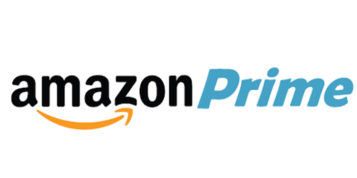New Study from Marin Software Exposes Top Priorities, Challenges for Digital Marketers in 2019
Growth remains a top priority for advertisers, and driving brand awareness is central to that goal. However, digital marketers face constant challenges—hitting volume targets with paid search, accurate attribution with paid social, and leveraging audience data with eCommerce—in their quest to drive business results through digital advertising.
That’s according to Marin Software’s latest State of Digital Advertising 2019 report, which canvassed the views of over 450 B2B and B2C digital marketing professionals in the US and the UK to understand their top priorities, challenges, and opportunities for 2019.
Paid Search Still Dominates Digital Advertising
The study confirmed that paid search remains the dominant digital ad channel, commanding 39% of the total budget, although the playing field is levelling out. Paid social claimed the second-largest share of advertisers’ budgets (18%) despite well-documented struggles with data privacy, followed closely by display (16%).
Instagram and Amazon: Breakout Stars of the Year
As brands increase their ad spend on Instagram, everyone is wondering if this comes at the expense of Facebook ad dollars. Is Facebook taking money out of its own pockets? Not really. The majority of respondents (67%) say Instagram spend will come from incremental budget rather than transferring from Facebook.
The past 12 months have been kind to Amazon, with 60% of the responding digital marketing professionals planning to increase their Amazon spend over the next year. And, 55% of them started using Amazon because they see it as a significant growth opportunity, whereas one in four are looking to increase purchases at the lower end of the funnel.
Despite Amazon’s progress, the offering is not yet considered as sophisticated as Facebook or Google—37% of those surveyed say the campaign management tools on Amazon are not optimal and 23% say the reporting tools are not as established as other channels. In addition, 30% of responding advertisers say lack of expertise with Amazon ads is the primary reason why they are not yet using the platform, so there’s clearly a significant skills gap to close.
Trust Is a Must: Google Leads the Pack
Google emerged as the most trusted publisher, with an average score of 4.5 out of 5. And, 98% of respondents rated Google a 4 or 5 on the trust index—it’s worth noting that Google is the only publisher that didn’t receive any 1 or 2 trust ratings.
2019 Ad Innovations
As brands tussle to capture consumer attention, advertisers are turning to new ad formats to break through the digital noise and drive awareness.
84% of respondents who use paid search (SEM) are currently using or planning to use Google’s new Responsive Search Ads format. Ad spend on shopping ad formats is also rising fast, with 65% saying their company’s use of Shoppable Images within search will increase in 2019.
Video advertising continues to lead the way in paid social, with 32% of survey respondents reporting that video is the most effective social ad format, followed by image ads (26%), Instagram Stories (23%), and carousel ads (19%).
“This year’s report shows a shift in advertising spend as marketers explore alternative channels and emerging ad formats,” said Wes MacLaggan, SVP of Marketing at Marin Software. “The digital advertising landscape continues to evolve, with advertisers struggling to close the skills gap as publishers innovate. At Marin, we’re seeing a greater emphasis on video and new ad formats like Responsive Search Ads and Shoppable Images to gain mindshare and drive growth. The eCommerce landscape is a hotbed of innovation, presenting retail brands with many opportunities and some challenges to navigate.”
To learn more, download the full State of Digital Advertising 2019 report.
Forward-looking Statements
This press release contains forward-looking statements that involve risks and uncertainties, including, among other things, statements regarding Marin’s business, research, and product capabilities. These forward-looking statements are only predictions and may differ materially from actual results due to a variety of factors including, but not limited to, our ability to grow sales and marketing capabilities, retain and attract personnel, develop and release new features, increasing competition in our market, fluctuations in our operating results and inability to forecast financial metrics, and other general market, political, economic, and business conditions. These forward-looking statements are based on current expectations and are subject to uncertainties and changes in condition, significance, value, and effect as well as other risks and uncertainties detailed in documents filed with the Securities and Exchange Commission, including our most recent report on Form 10-K, recent reports on Form 10-Q, and current reports on Form 8-K which Marin Software may file from time to time, all of which are available free of charge at the SEC’s website at www.sec.gov. Any of these risks could cause actual results to differ materially from expectations set forth in the forward-looking statements. All forward-looking statements in this press release reflect Marin Software’s expectations as of July 18, 2019. Marin Software assumes no obligation to, and expressly disclaims any obligation to, update any such forward-looking statements after the date of this release.





